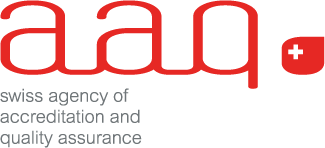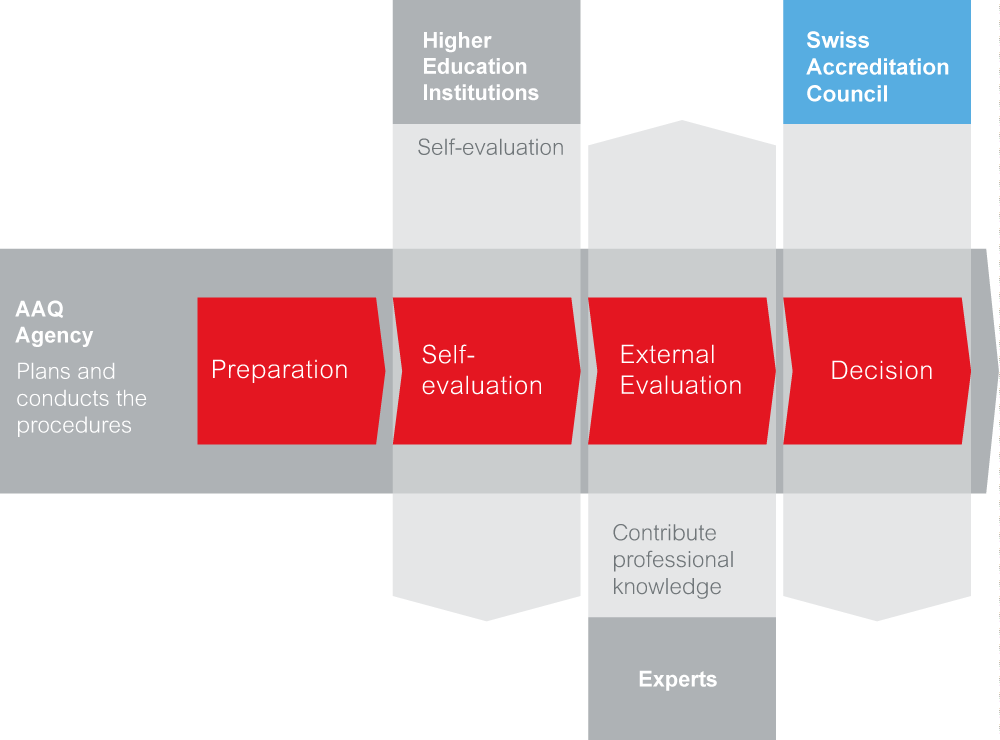Successful accreditations certify that minimum quality requirements are met by a university or a course of study. Accreditations protect the interests of students and other stakeholders. They also form a basis for the recognition of degrees and titles, and thus for mobility in European education.
AAQ procedures respect the autonomy of higher education institutions (HEIs): they are committed to the principle that HEIs themselves are primarily responsible for quality assurance systems. By having external reviews carried out by qualified experts, the AAQ makes an important contribution to the development of quality assurance systems. On a practical level, AAQ procedures throughout Europe are based on recognised principles and take account of the specific features of different types of universities in Switzerland.
The accreditation procedure is a transparent, multi-layered process with a decision founded in law. The university submits an application. The procedure is opened if the criteria are fulfilled. The first phase, self-assessment, is a time of critical reflection on the HEIs and its quality assurance system. In the meantime, the AAQ assembles a team of experts to carry out an external evaluation in the form of on-site visits: The contents of the self-assessment report are examined during discussions with university representatives. The experts draw up a report on the degree to which standards are met and make a recommendation for an accreditation procedure. Together with a statement by the applying university, this reaches the decision-making body – the Swiss Accreditation Council in the case of a procedure under the HEdA.
The AAQ devises and supervises the procedure, ensuring that it conforms to the relevant regulations. Once the procedure has been completed, the AAQ publishes the reports. Irrespective of the type of procedure, HEIs or degree courses may apply to be reassessed if they disagree with the decision of the Accreditation Council.

